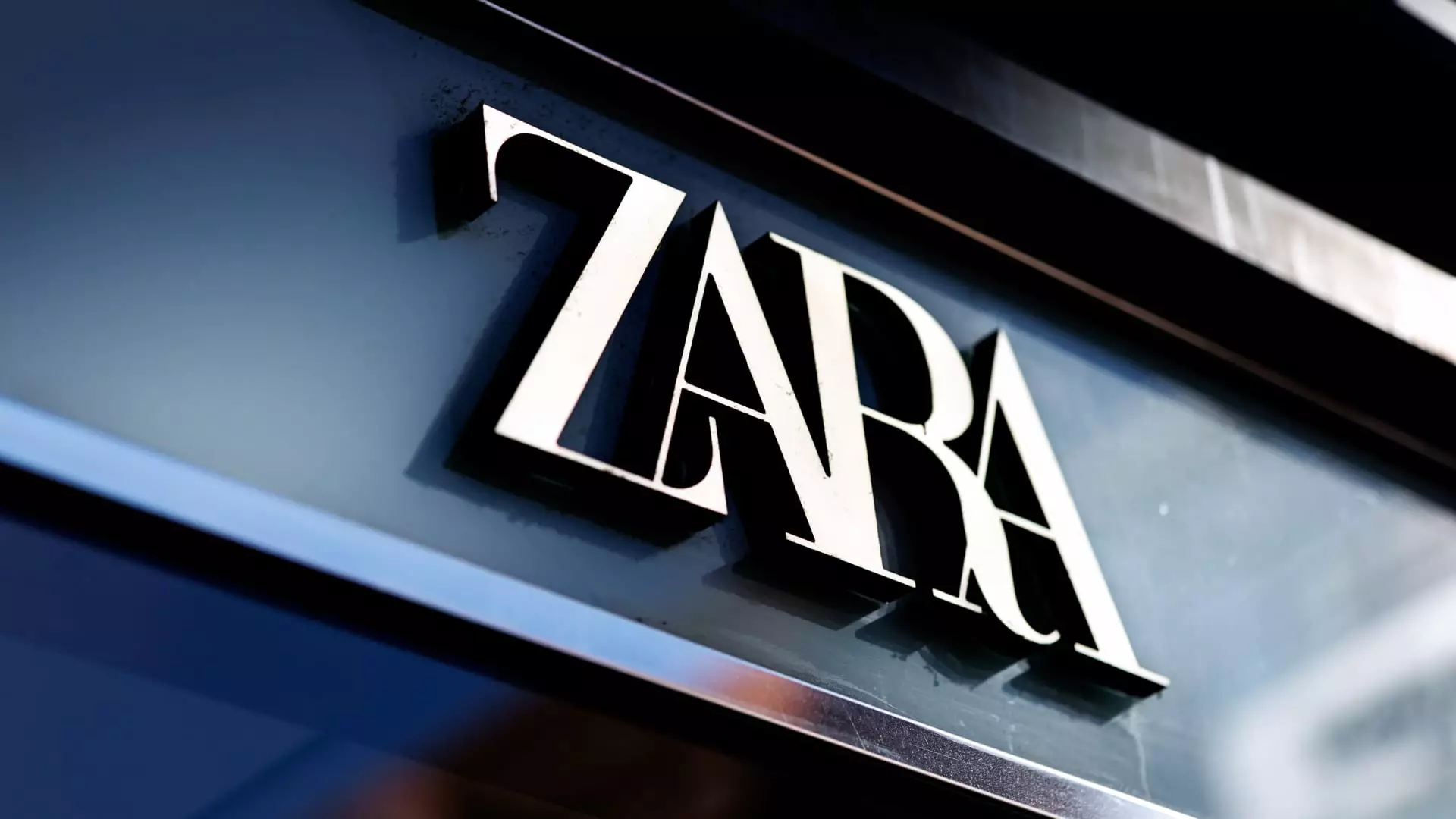Inditex, the powerhouse behind Zara and other beloved high-street brands, has recently stirred the waters of retail speculation with disappointing quarterly sales results. Reported revenues of 8.27 billion euros fell short of the anticipated 8.39 billion, reflecting a troubling downturn in consumer spending habits. The drop in sales signals not just a minor hiccup but potentially the onset of a critical inflection point for the retail giant. Investors, fueled by fear of economic unpredictability, have reacted sharply—only a few hours after the revelation, shares plummeted by 4.4%. What was once seen as unassailable command over the fast fashion market now faces harsh scrutiny amidst a backdrop of macroeconomic challenges.
Net income for the quarter barely met analysts’ low expectations, clocking in at 1.3 billion euros, compared to the projected 1.32 billion. This performance should ignite concerns, as it paints a worrying picture of diminishing returns during a period typically characterized by high consumer spending. The sluggish start to the summer season, with only a 6% increase in sales compared to last year’s impressive 12%, raises red flags about Inditex’s ability to attract consumers effectively. This is a dramatic shift for a company that has long been viewed as a bellwether for retail confidence and consumer appetites.
A Complex Retail Landscape
Inditex’s recent struggles underscore the intricate and fiercely competitive nature of the retail landscape. The company, which relies heavily on its diversified production network throughout Spain, Portugal, Morocco, and even Brazil, may not have a foolproof safeguard against moves from upstart competitors like Shein and Temu. These brands are thriving by capitalizing on lower price points and heightened relevancy, further eroding the market share that Inditex has held with a somewhat superior flair.
Gorka García-Tapia Yturriaga, Inditex’s head of investor relations, offered a sober take during the earnings call, acknowledging the ambiguous potential ramifications of economic tariffs while also attempting to reassure stakeholders about the company’s robust supply chains. Yet investors might see the ambiguity as an admission of vulnerability at a time when reliability is paramount. Is Inditex truly as prepared to navigate this fluctuating landscape as it claims, or has the relentless march of cheaper competitors forced it into a defensive position?
From Growth to Normalization: Changing Expectations
Mamta Valechha, a consumer discretionary analyst, echoed the nervousness rippling through the investment community; she suggested that the disappointing results could spark intense debates about Inditex’s growth sustainability. Bears in the market will undoubtedly seize on this opportunity to downplay the company’s potential, arguing that the brand’s former dynamism is fading and that its current valuation demands reevaluation.
Critically, these shifts could mark a significant pivot for Inditex. The “normalization” of its growth trajectory—essentially a less spectacular ascent into the market—could invoke existential questions about its role in a retail sector increasingly dominated by agile fast-fashion entities and lower-cost disruptors. The comparison with competitors like H&M, particularly as both grapple with declining demand, reflects a troubling narrative that is becoming difficult for the company to shake off.
Resilience or Reluctance? The Future of Inditex
Despite the pressures, there remains some optimism for Inditex’s future. Its history of resilience in tough conditions cannot be ignored, with previous earnings showing a capability to bounce back from adversities. However, one must grapple with the reality that consumer preferences are in constant flux, particularly among younger demographics enamored with sustainability. As economic realities press consumers to tighten their belts, will Inditex be agile enough to pivot product offerings in a way that resonates with the changing ethos of modern shoppers?
The looming uncertainties in global trade, especially concerning the impact of tariffs, paint an ominous backdrop against which Inditex is trying to map out its response. With the retail sector in a state of existential turmoil influenced by fluctuating economic conditions, Inditex must navigate this terrain with extreme caution. The path ahead is fraught with challenges, questioning whether its traditional retail strategies can still secure a prominent place in an increasingly volatile market landscape.

